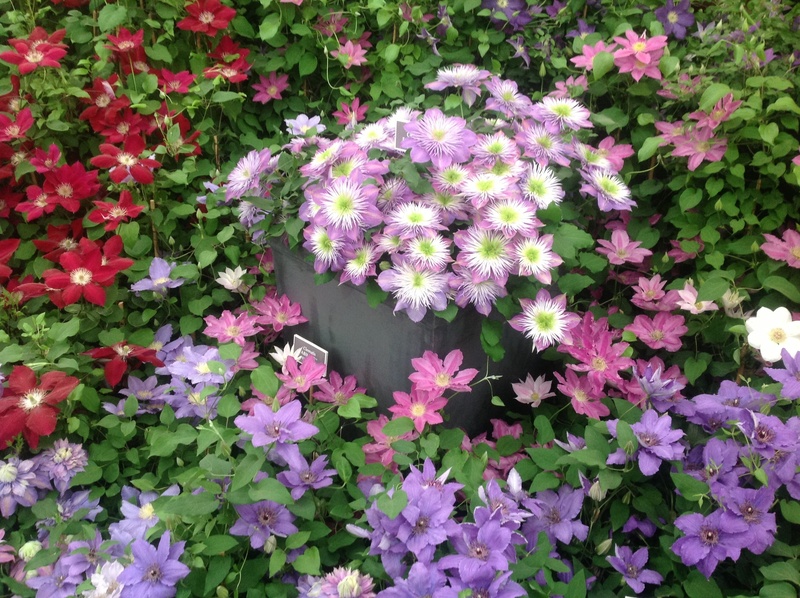The Future of Farming: Vertical Gardening
Posted on 01/07/2025
The Future of Farming: Vertical Gardening
The world's population is projected to surpass 9 billion by 2050, placing enormous pressure on conventional farming systems to produce more food efficiently and sustainably. With rapid urbanization and shrinking arable land, traditional agriculture faces unprecedented challenges. Vertical gardening--a revolutionary approach to farming--emerges as a key solution for our food future. In this comprehensive guide, we will explore the evolution, benefits, technology, and the promising future of vertical gardening as a sustainable farming alternative for urban and rural areas alike.
What is Vertical Gardening?
Vertical gardening refers to the practice of growing plants in vertically stacked layers or on vertically inclined surfaces, allowing for efficient utilization of limited space. It encompasses everything from small home-based living walls to large-scale, multi-story vertical farms that employ cutting-edge technology.
- Urban vertical gardens: Compact green walls installed in urban homes, patios, or commercial buildings.
- Commercial vertical farms: High-tech, climate-controlled warehouse farms stacking produce, optimizing yields and reducing resource use.
- Hydroponic and aeroponic systems: Soilless growing methods often paired with vertical structures for maximum efficiency.
- Trellis or modular gardens: Basic vertical planters and trellised systems that extend upward rather than outward.
The future of farming is increasingly tied to vertical gardening as global cities struggle with food security and environmental challenges.

Why is Vertical Gardening Gaining Importance?
1. Land Scarcity and Urbanization
As cities expand, agricultural land shrinks and arable soil degrades. Vertical gardening in urban farming solves this by transforming rooftops, balconies, and even indoor spaces into productive green zones.
- Reduces the need for sprawling farmland
- Brings food closer to consumers, slashing transportation emissions
- Integrates agriculture seamlessly into urban infrastructure
2. Environmental Pressures
Climate change, water scarcity, and pollution threaten traditional crop yields. Vertical gardening systems are designed to maximize resource efficiency and reduce environmental harm.
- Uses up to 95% less water through recirculation systems
- Minimizes pesticide and herbicide use via enclosed environments
- Reduces carbon footprint by growing locally
- Enhances urban air quality through increased green cover
3. Year-Round Production with High Yields
Unlike conventional fields, advanced vertical gardening techniques are often climate-controlled, allowing for multiple harvests any time of the year, irrespective of external weather conditions.
- Boosts annual crop output
- Ensures reliable, resilient food supply chains
- Reduces vulnerability to natural pests and disasters
Core Technologies Shaping the Future of Vertical Gardening
The future of vertical gardening is powered by technology and innovation. Here are some cutting-edge tools making a profound impact:
1. Hydroponics and Aeroponics
- Hydroponics: Growing plants in a soilless, nutrient-rich water solution. It allows dense planting and stacked growth, dramatically saving space and water.
- Aeroponics: Plants are suspended in air and periodically misted with nutrients. This technique maximizes oxygen availability and accelerates plant growth rates.
2. LED Lighting Technology
Energy-efficient LED lights mimic the solar spectrum and provide plants with precise light wavelengths required for photosynthesis. This is crucial for indoor vertical farming where sunlight is limited or unavailable.
3. Automated Climate Control
Modern vertical garden farms feature intelligent monitoring systems that maintain optimal temperature, humidity, CO2 levels, and nutrient distribution.
- Boosts plant health and productivity
- Reduces manual labor through automation and IoT sensors
- Allows remote operation through specialized software
4. AI & Data Analytics
Artificial intelligence analyzes growth patterns, manages resources, predicts crop yields, and mitigates risks. Smart farming in vertical gardens thereby enhances efficiency and profitability.
5. Modular and Scalable Systems
The advent of modular vertical garden installations means that both individuals and businesses can start small and expand as needed, adapting to different crops and environments seamlessly.
Benefits of Vertical Gardening for the Future of Agriculture
Vertical gardening offers a suite of advantages over traditional cultivation. Below, we examine its most important benefits for the sustainable future of farming:
Maximized Land Use Efficiency
By stacking plants vertically, these systems produce far more per square meter than flat fields--a game-changer in space-constrained cities.
Significant Water Conservation
Vertical gardening systems recirculate water, losing little to evaporation or runoff. Compared to traditional irrigation, indoor vertical gardens can be up to 95% more water-efficient.
Reduced Chemical Use
Indoor and enclosed vertical gardens drastically cut down the need for pesticides and herbicides. Controlled environments minimize pest invasions, yielding cleaner, healthier food.
Shorter Supply Chains
Local vertical farms can supply fresh produce to cities, restaurants, and retailers within hours, preserving nutritional value and reducing transportation emissions.
Improved Urban Livability
Urban vertical gardens beautify cityscapes, filter air, dampen noise pollution, and create calming green spaces. They even help regulate urban heat and promote biodiversity.
Innovation in Food Production and Local Economies
New crops, niche herbs, and specialty greens grow easily indoors, encouraging culinary innovation. Furthermore, vertical gardening businesses spawn new jobs and entrepreneurial opportunities.
Challenges and Future Solutions in Vertical Gardening
Despite its promise, vertical gardening farms face several challenges that innovators are working to solve:
- High Initial Costs: Setting up advanced vertical farms requires significant capital for technology and infrastructure.
- Energy Demand: Lighting and climate control can be energy-intensive, although ongoing improvements in renewable energy are helping to offset this.
- Crop Variety Limitations: Leafy greens and herbs thrive, but growing larger grains, fruits, or root vegetables at scale is still a challenge.
- Technical Expertise: Managing complex systems may require specialized knowledge, but new educational resources and automation are closing the gap.
Overcoming these hurdles will be key to widespread adoption and ensuring that the future of agriculture truly benefits from vertical gardening innovations.
Case Studies: Pioneering Vertical Gardening Around the World
1. AeroFarms - Newark, USA
AeroFarms operates one of the world's largest vertical indoor farms, producing millions of pounds of leafy greens annually using aeroponic technology. With up to 390 times more productivity per square foot than field farming, AeroFarms highlights the potential of scaling vertical agriculture.
2. Sky Greens - Singapore
Sky Greens developed the world's first rotating vertical farm, maximizing sunlight exposure while using 95% less water than conventional farms. Singapore's commitment to food security showcases how vertical farming systems are integral to feeding dense urban populations.
3. Spread - Kyoto, Japan
Spread's Techno Farm uses robotics and artificial intelligence to automate every step of vertical farm production, from planting to harvest. The result is consistent, safe, and efficient large-scale operations.
The Future of Vertical Gardening: Trends and Predictions
The trajectory for vertical gardening in future farming is nothing short of revolutionary. Here's what experts anticipate for the next decade:
- Greater Crop Diversity: Advances in genetic engineering and indoor pollination could enable the growth of a wider array of crops beyond leafy greens.
- Integration with Smart Cities: Vertical farms will become integral components of buildings, schools, and community centers, woven into everyday urban life.
- Decentralized Food Systems: Local micro-farms, supported by AI and automation, will empower communities to be self-sufficient and resilient to disruptions.
- Green Building Synergies: Living green walls and productive rooftop gardens will merge with sustainable architecture, improving air quality and urban ecosystems.
- Increased Renewable Energy Use: Solar, wind, and geothermal energy sources will be increasingly harnessed to power indoor farms, moving toward net-zero operations.
- Widespread Adoption in Developing Nations: As costs fall and modular kits proliferate, vertical gardening will address food security challenges in both wealthy and resource-poor regions.

How to Get Started with Vertical Gardening
Whether you're a city dweller, small-scale farmer, business owner, or educator, embracing vertical gardening for the future of farming is within reach. Here are steps to get started:
- Assess your space: Walls, balconies, corners, rooftops, or a spare room--these can all become productive gardens.
- Choose your system: Start simple with vertical planters or trellises, or opt for hydroponic/aeroponic shelves for higher productivity.
- Select crops: Begin with leafy greens, herbs, strawberries or edible flowers, then expand as you gain experience.
- Install lighting (for indoors): Invest in quality LED grow lights for consistent yields.
- Monitor and maintain: Use timers and sensors for water, light, and nutrients. Stay vigilant for pests or disease.
- Scale up: As you refine your process, increase your operation's size or even move into a commercial venture.
Educational resources, online communities, and starter kits make it easier than ever to join the vertical gardening revolution.
Conclusion: Embracing the Vertical Gardening Revolution
As humanity searches for sustainable solutions to feed a growing, urbanizing population, vertical gardening stands as a beacon of hope. Its combination of space efficiency, water savings, environmental benefits, and technological integration points to a resilient future of farming. Innovators worldwide are pushing boundaries, unlocking new potential for feeding our cities and improving global food security.
By embracing vertical gardening in agriculture, individuals and societies can transform not only the way we grow food but also our relationship with nature within bustling cities. Now is the perfect time to explore, experiment, and become a part of the green future--one vertical garden at a time.
Join the movement. The future of farming is vertical!

